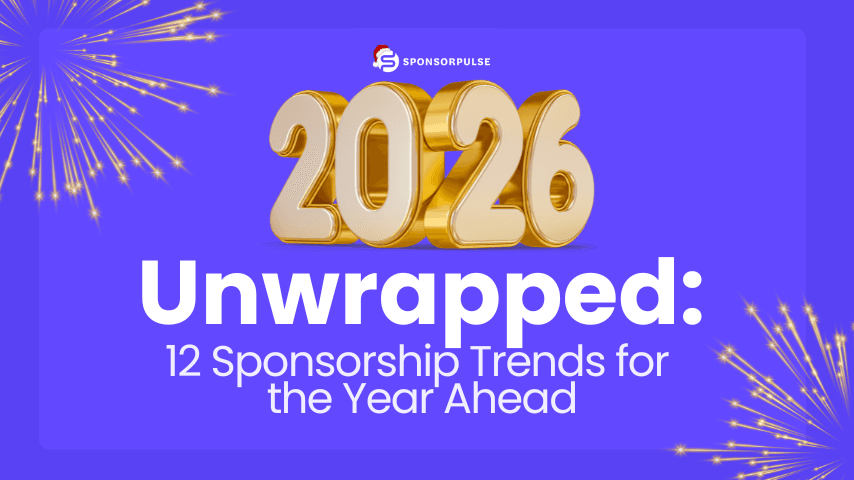Sponsorship ROI in 2025: Accountability, Efficiency, and Data-Driven Investment Decisions

In 2025, sponsorship success isn’t just about visibility—it’s about proving real business impact through data, discipline, and outcome-driven strategy
The Accountability Challenge
Picture this: You’re sitting in the boardroom, presenting last quarter’s marketing performance. Every digital campaign has click-through rates, conversion data, and clear attribution. Then you get to that $500K+ (+++) sports sponsorship deal. The numbers? Reach, impressions, and “brand visibility.”
The most often question raised from there… ‘yes, but did it achieve our objectives and drive incremental sales???’
In today’s economic climate, the margin for marketing missteps is razor-thin. Budgets are tighter, CFOs are scrutinizing every dollar, and CMOs are expected to prove not just brand lift but bottom-line impact. Within this environment, sponsorship marketing is under more pressure than ever to deliver measurable return on investment, both in brand equity and financial terms.
Gone are the days of broad-stroke, feel-good sponsorships. Welcome to the age of data-driven, ROI-accountable sponsorship decision-making.
The Shift: Efficiency Over Abundance
With economic uncertainty forcing brands to cut back on discretionary spend, we’re seeing a shift from volume-based activation to value-based alignment. Brands no longer seek to be everywhere, they seek to be exactly where it matters.
This has birthed a new mantra: less is more.
Rather than casting a wide net across multiple sponsorship verticals, brand marketers are homing in on one key passion point - a single vertical that resonates deeply with their target audience. This focused approach enables more authentic, integrated storytelling and ensures resources are maximized against the opportunities with the highest return potential.
In fact, 73% of brands are currently or planning on focusing on single passion points rather than casting wide nets across multiple sponsorship verticals.
The New Sponsorship Equation: Data + Accountability
At the heart of modern sponsorship strategy is one essential principle: every step must be data-informed. Whether you’re a brand decision-maker or a rights holder pitching partnerships, ROI accountability isn’t optional - it’s the baseline expectation.
Selection: Be where your audience is: The first question should no longer be “Is this a high-profile opportunity?” but rather “Is this where our target consumer is emotionally and behaviorally engaged?” Does it have the potential to impact outcomes for my business? Sponsorships should be chosen based on audience alignment, passion-point relevance, and critically, delivery on brand objectives. All of which are cost-effectively measurable!
Investment: Pay for outcomes, not just impressions: Fair market value is no longer defined by logo placements or reach alone. Today, value is tied to outcome potential. Rights holders must move beyond selling visibility and start selling measurable impact, from increased consideration to conversion lifts. To ‘prove’ it’s working, we need to go beyond ‘the number of times my brand may have been seen’ and into ‘how many fans associate my brand with the experience?”
Performance: Isolate outcomes and quantify lifts: Proving success in sponsorship now demands marketing science rigor. Brands and rights holders must be able to isolate specific sponsorship-driven outcomes and attribute real value to them. This includes brand lift studies that isolate sentiment changes, conversion tracking for downstream business impact, and econometric modeling to separate sponsorship impact from other concurrent marketing channels. In other words, a SponsorPulse Impact Report (😊).
Consider how a major automotive brand approached their motorsports sponsorship. Instead of measuring TV logo seconds, they tracked test drive bookings at track events, social sentiment around safety messaging, and dealer foot traffic in markets where races occurred. The result? A measurable 12% increase in consideration scores and 2,400 qualified leads directly attributed to the sponsorship.
What This Means for Rights Holders and Brands
For rights holders: If you’re selling sponsorships, the message is clear - bring proof, not just passion. Rights holders who invest in data infrastructure, audience insights, and outcome reporting will be seen not just as platforms, but as performance partners. Those who can’t deliver measurement will struggle to retain - or even attract - partners.
For brands: The opportunity lies in discipline and focus. Success comes from choosing fewer, deeper partnerships where performance can be tracked, ROI can be proven, and audiences can be engaged in meaningful ways. It’s about shifting from “sponsorship as exposure” to “sponsorship as a growth lever.”
The Path Forward: Sponsorship as a Calculated Investment
Sponsorship is a calculated investment…and if isn’t, you’re doing it wrong. The brands and rights holders who embrace data, demand performance, and stay focused on high-value passion points will not only survive this tight economic cycle, they’ll emerge stronger.
Start by identifying which business metrics matter most to your leadership team. Is it brand awareness, lead generation, customer acquisition, or retention? Once you’ve established your north star, you can design measurement frameworks that connect sponsorship activities to those outcomes.
Implement measurement systems and approaches that are outcome based, and more specifically, rooted in YOUR objectives. The data is clear: brands with robust sponsorship measurement frameworks report 35% higher ROI than those relying on traditional metrics alone.
Ready to transform how your organization measures sponsorship success? Our team specializes in helping brands build measurement frameworks that connect sponsorship investments to business outcomes. Let’s have a conversation about creating a system that makes your CFO as excited about sponsorships as your brand team.


